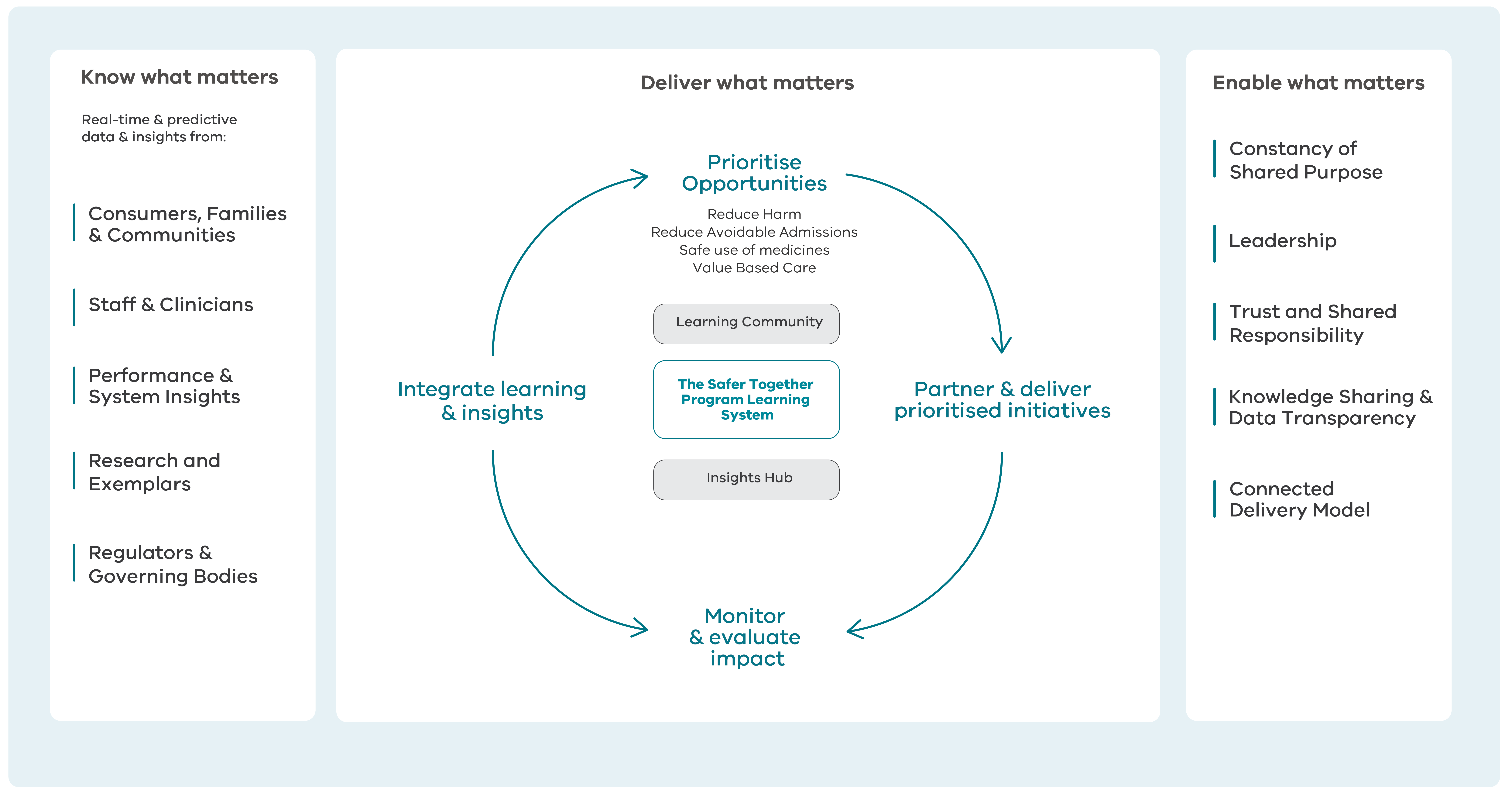About the program
Find out how we're partnering with the health sector and consumers to create a safer more sustainable healthcare system for all Victorians.
What we offer health services
We offer a range of supports to help health services strengthen safety and quality of care.

How to get involved
Learn about the different ways to participate in the program and find out how to get involved.
Building a learning health system
The program aims to connect all Victorian health services through a continuously improving learning health system. In this system, health services collaborate to learn, share, and apply knowledge that continuously improves care and patient outcomes.
Our quality improvement work
Upcoming projects
See our upcoming projects and contribute to design and scoping activties.
Insights and knowledge
Learn from our past improvement projects to solve similar challenges in your health service.
Latest program news
PROJECT UPDATE
Results published from the National Preterm Birth Prevention Program
New data reveals that Australia's initiative to curb preterm births has markedly lowered the incidence of early deliveries and enhanced pregnancy outcomes for women nationwide.
NEWS
Results from the Safer Care for Kids: ViCTOR pilot project
The Safer Care for Kids: ViCTOR pilot project has strengthened how clinicians recognise and respond when a child’s health deteriorates and given parents and carers a stronger voice in their child’s care.
PROJECT UPDATE
Celebrating improvement in planned surgery – Results from 2024 to 2025
We're pleased to share the results from the 2024/25 financial year for the Discharge Optimisation for Planned Surgery (DOPS) project.


